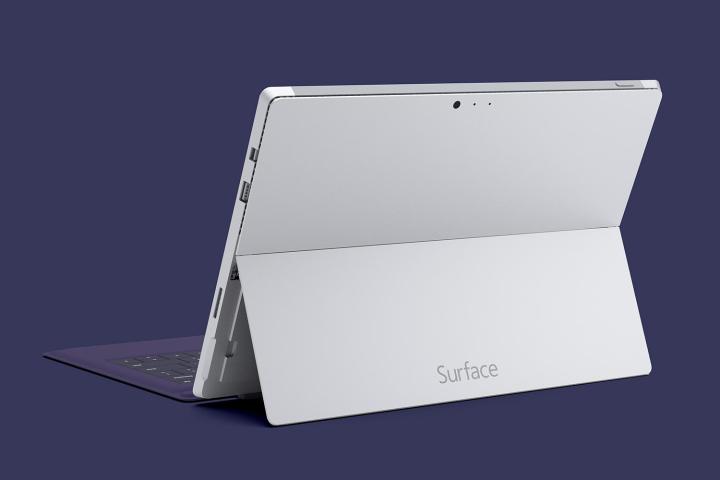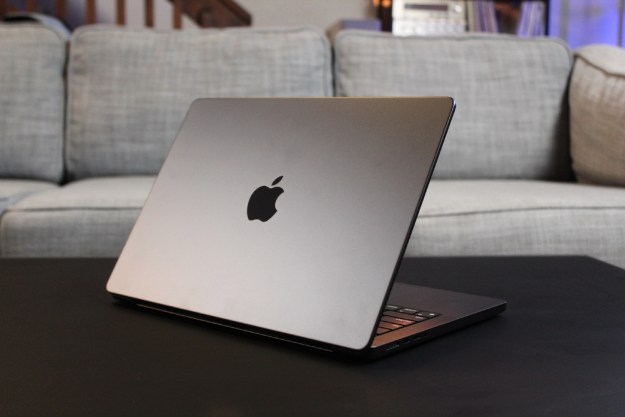
Check out our full written Micosoft Surface Pro 3 review.
Update 5/20/14 12:56 pm EDT: Microsoft revealed the Surface Pro 3 today, and the price/spec rumors we wrote about below turned out to be accurate. The Surface Pro 3 will be available for pre-order starting tomorrow, May 21, at 12:01 am EDT. It will start at $799, multiple configurations will be offered. The high-end version of the device will top out at $1,949.
Original story
You’ll likely have many questions regarding the rumor that Microsoft’s entry-level Surface Pro 3 will start at $799 and cost as much as $1,949. All of mine revolved around one basic query:
What on earth is Microsoft thinking?
The word on the street is that Microsoft will roll out five new flavors of the Surface Pro 3 at a New York City event Tuesday morning. The base model will cost $799 and pack an Intel Core i3 processor, 4GB of RAM, and 64GB of storage. The next step up is the $999 version, which bumps the CPU to a Core i5, keeps the RAM constant at 4GB, and doubles the storage. For $1,299, you still get a Core i5-powered Surface Pro 3, but the
From there, the price goes up to $1,549, which nets you an Intel Core i7 processor, but keeps the RAM and storage at $1,299 levels. And then there’s the mack daddy model: an Intel Core i7 processor, 8GB of memory, and a 512GB hard drive for the break-out-in-a-cold-sweat price of $1,949.
It’s no secret that the PC market isn’t exactly thriving.
What if you’re a devoted Mac user? Is there a reason to switch to the Surface Pro 3? Absolutely not, by the look of things.
Do as I just did: Head over to the Apple store to see how a high-end 13-inch MacBook Air stacks up with these rumors. It doesn’t look pretty for Microsoft’s opus. A top of the line 13-inch MacBook Air costs $1,749 and includes a dual-core, 1.7-GHz Intel Core i7 processor, 8GB of RAM, and a 512GB PCI-Express SSD. That’s $200 cheaper than a similarly equipped Surface Pro 3, and we don’t even know whether the SSD in Microsoft’s latest and greatest will be PCI-Express based (and therefore much quicker than a standard drive).
What if you wanted to downgrade the MacBook Air a bit? Slicing the storage in half to 256GB shrinks the price gap between the MacBook Air and the Surface Pro 3, but Apple still wins. When does Apple ever win on price, for god’s sake?
Only when you step down to a Core i5 CPU, 8GB of RAM, and a 256GB SSD do the prices of the 13-inch Air and Surface Pro 3 match up. However, considering that Microsoft is competing with Apple and its substantial mindshare, the Surface Pro 3 needs to do much more than simply even up on price to sway anyone.
But forget about the direct comparisons for a moment. What about cheaper hardware that lets you do basic tasks and just plain works? Sound like anything you’ve heard of? Does the name Chromebook ring a bell? It should to Microsoft — and if these rumored prices and specs are accurate, the Surface Pro 3 stands no chance of competing with Google-powered notebooks that are typically priced in the $300-$500 range.

On top of that, they’re actually selling, with consistent reports indicating that they’re catching on in both the enterprise and education sectors. It also doesn’t help Microsoft’s cause that, despite the Chromebook’s early reputation of being an expensive paperweight when not connected, Google is working to make Chrome OS more functional when it’s off-line.
Here’s another telling note about Chromebooks and the problems they pose for the Surface Pro 3 — and PCs overall, for that matter. Right now, Chromebooks occupy two of the top five spots in Amazon’s list of best-selling laptop computers. They’re both dirt cheap, too. Number two on the list is the Acer C720 at $200. Right behind it is the Samsung Chromebook, which costs $224. How is the Surface Pro 3 supposed to compete with that?
Assuming these rumors are true, Microsoft CEO Satya Nadella has badly misjudged the market. It’s doubtful that the Surface Pro 3 was designed and conceived between the beginning of Nadella’s tenure in February and now, but he is making the choice to release them.
It’s no secret that the PC market isn’t exactly thriving, and industry analysts expect annual laptop/desktop shipments to continue falling. According to Gartner, annual shipments in the traditional PC market will fall from roughly 296.1 million units in 2013, to 276.7 million this year. That number is expected to fall further in 2015 as well, down to 263 million. Expensive Surface Pro 3 units won’t help that, not matter how beautiful the hardware design is.
Microsoft hoped to release a Bugatti for the computing world, a tablet as beautiful and powerful as a super-car. Too bad it carries the same price tag.
Editors' Recommendations
- The Surface Pro 10 sounds amazing, and it may be coming soon
- The Surface Pro could finally live up to its potential this year
- I tried Microsoft Office on my Quest 3 and came away disappointed
- iOS 17.2 just arrived — here’s what’s new in the big iPhone update
- I’m worried about the future of the Microsoft Surface


